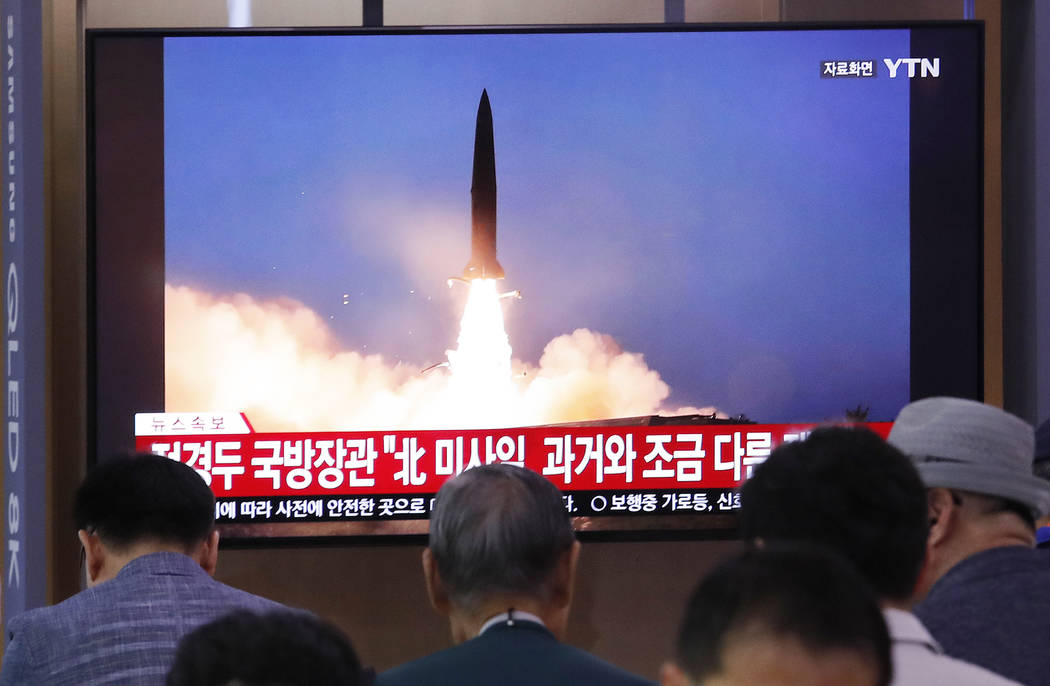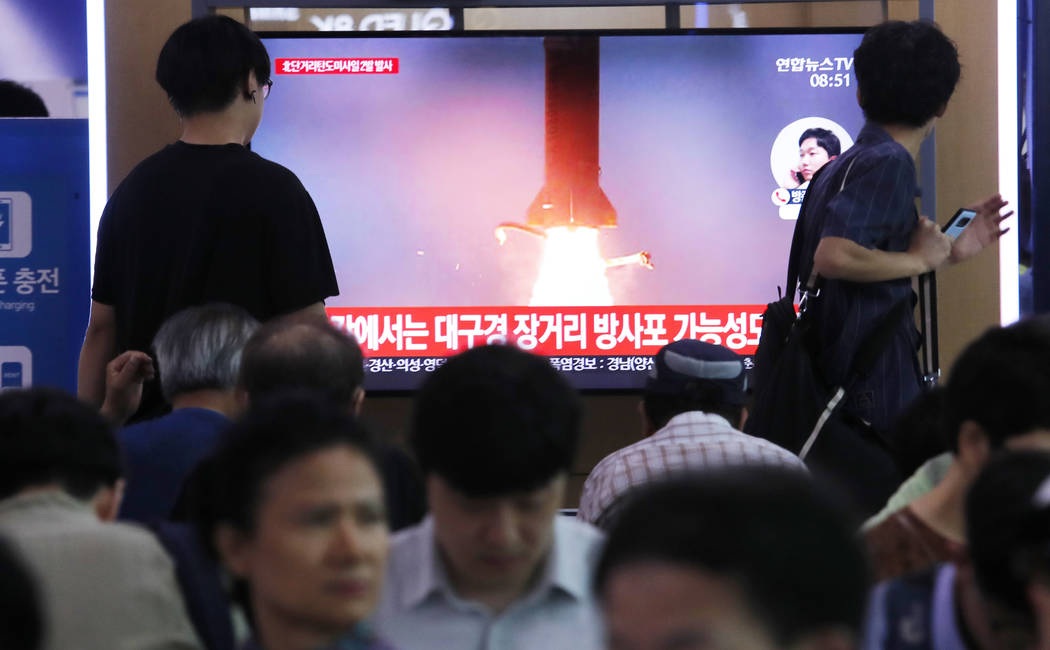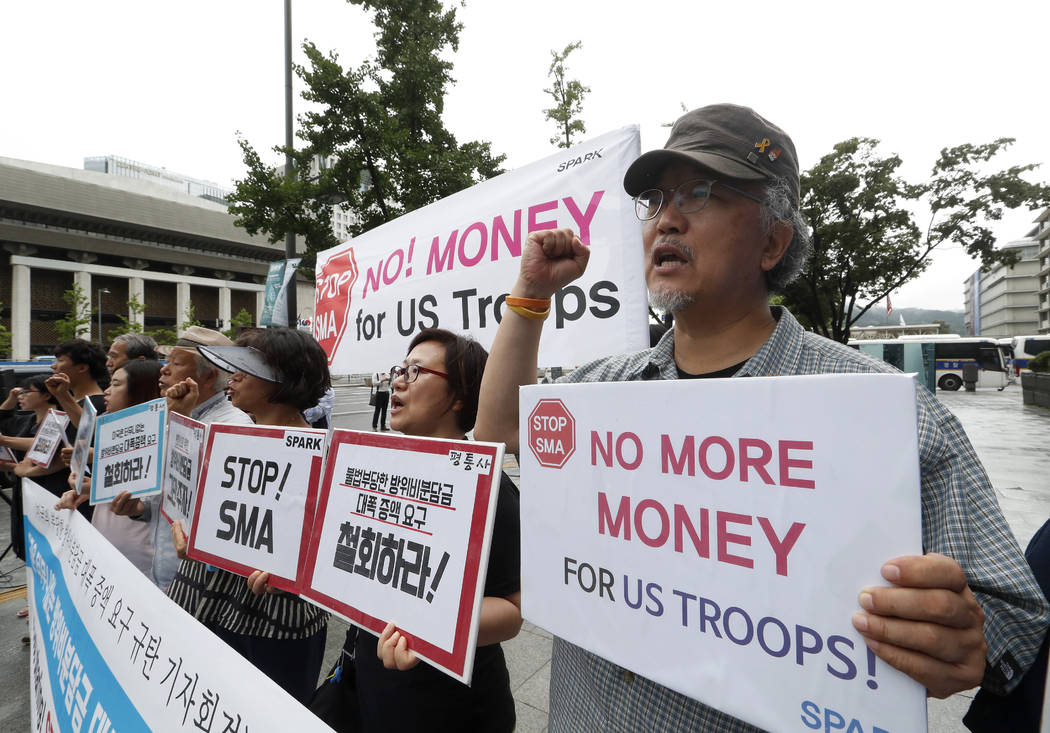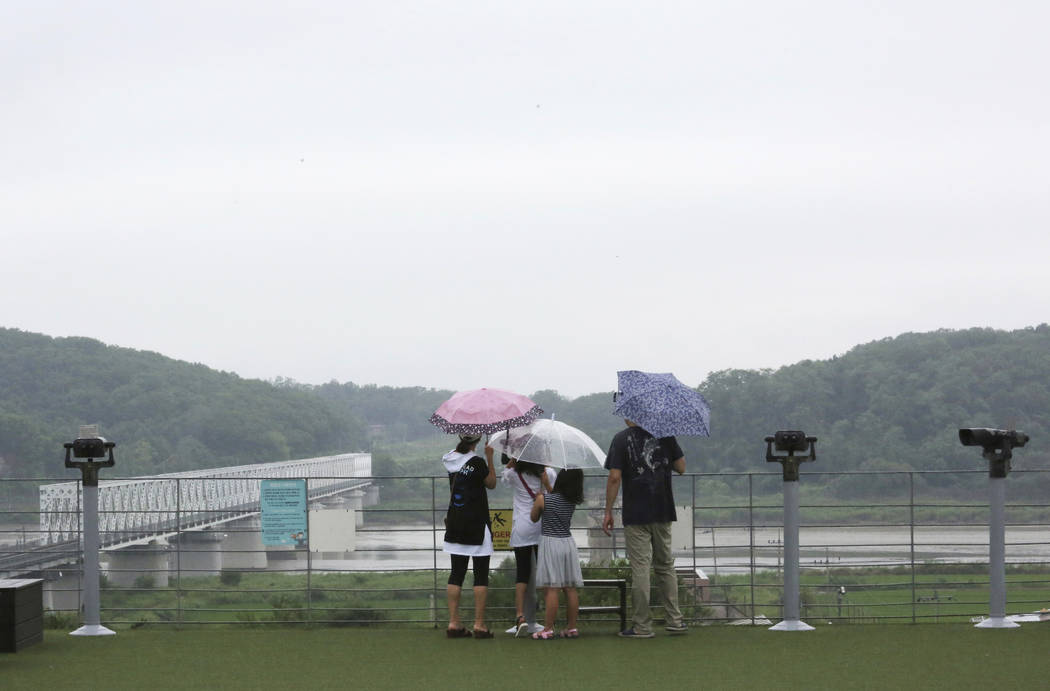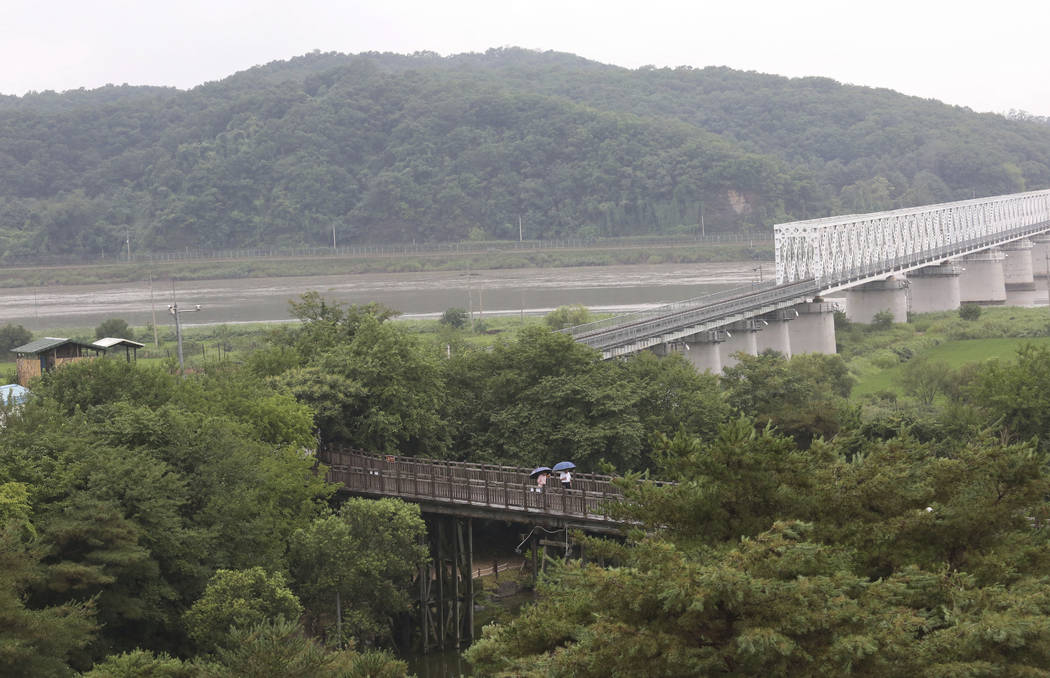N. Korea fires 2 missiles in 2nd test this week, Seoul says
N. Korea launches 2 short-range missiles in 2nd test this week, Seoul says
SEOUL, South Korea — South Korea’s military said North Korea conducted its second weapons test in less than a week Wednesday, firing two short-range ballistic missiles off its east coast in a move observers said could be aimed at boosting pressure on the United States as the rivals struggle to set up fresh nuclear talks.
South Korea’s Joint Chiefs of Staff said in a statement that the missiles were launched from Wonsan, a city the North pushes as a vacation destination but that it also uses as a regular launch site.
It said both missiles were believed to have flown about 250 kilometers (155 miles) at a maximum altitude of 30 kilometers (19 miles), and that the South Korean and U.S. militaries were trying to gather more details.
The test, which would be yet another North Korean violation of U.N. Security Council resolutions, comes as the country’s negotiations with the U.S. over its nuclear weapons program are at a stalemate and as Pyongyang has expressed anger over planned U.S.-South Korean military drills.
“The North’s repeated missile launches are not helpful to efforts to ease tensions on the Korean Peninsula, and we urge (North Korea) to stop this kind of behavior,” the South Korean statement said.
Japanese Prime Minister Shinzo Abe told reporters that the launches were “no threat to Japanese national security.”
Last Thursday, North Korea fired two short-range ballistic missiles that Seoul officials said flew 600 kilometers (370 miles) and as high as 50 kilometers (30 miles) before landing in the sea.
North Korea’s state media said those tests were supervised by leader Kim Jong Un and were designed to deliver a “solemn warning” to South Korea over its purchase of high-tech U.S.-made fighter jets and the planned military drills, which Pyongyang calls an invasion rehearsal.
Even though North Korea is banned by the U.N. from using ballistic technology in any weapons launches, it’s unlikely that the nation, already under 11 rounds of U.N. sanctions, will be hit with more punitive measures. Past sanctions were imposed only when the North conducted long-range ballistic launches.
Japanese Defense Minister Takeshi Iwaya told reporters Wednesday that the most recently launched weapons did not reach Japan’s exclusive economic zone and that officials were still analyzing details, including the flight distance and trajectory.
“It is extremely regrettable that North Korea continues firing the missiles that violate the U.N. resolutions,” Iwaya said.
Hua Chunying, a spokeswoman from the Chinese foreign ministry, said that China noted the launches and the responses of all sides, and that the “political settlement on the (Korean) Peninsula is currently in a critical stage.” China is North Korea’s most important economic and diplomatic ally.
“We hope that all parties concerned will cherish the hard-won alleviations and jointly make positive efforts to promote denuclearization and realize lasting peace on the peninsula and in the region,” Hua told reporters at a daily news briefing.
Observers say a low altitude flight by the missiles indicate North Korea may have been testing their ability to avoid being intercepted.
Earlier last week, Kim visited a newly built submarine and expressed his satisfaction with its weapons system. North Korea said its deployment was “near at hand.”
In a private briefing to lawmakers Wednesday, South Korean military intelligence officers said they’ve determined that the submarine likely has three launch tubes for missiles, according to Lee Hye-hoon, head of parliament’s intelligence committee. If confirmed, it would be North Korea’s first operational submarine with missile launch tubes, some experts said.
North Korea acquiring the ability to launch missiles from submarines would be an alarming development because such missiles are harder to detect in advance. Experts say the submarine North Korea used to test-fire missiles in recent years should be regarded as a test platform with a single launch tube. They say other North Korean submarines only have torpedo launch tubes.
Wednesday’s launches came hours after a senior U.S. official said President Donald Trump sent Kim mementos from his brief visit to an inter-Korean border town late last month.
The official said a top staffer from the National Security Council hand-delivered photographs from the leaders’ June meeting at the Korean Demilitarized Zone to a North Korean official last week. The Trump administration official spoke on the condition of anonymity because the official wasn’t authorized to speak publicly.
The DMZ meeting was the third summit between Trump and Kim. At their second meeting, in Vietnam in February, Trump rejected Kim’s demand for widespread sanctions relief in return for dismantling the North’s main nuclear complex, a partial disarmament step.
During the DMZ meeting, Trump and Kim agreed to resume nuclear diplomacy in coming weeks, but there hasn’t been any known meeting between the countries.
Speaking to reporters accompanying him to an Asian security forum in Thailand, U.S. Secretary of State Mike Pompeo said he’s “very hopeful” for a quick resumption in the nuclear talks.
Despite a recent lack of progress in nuclear diplomacy, both Trump and Kim have said they have maintained good relations with each other. After last Thursday’s missile launches, Trump tried to downplay the significance of the tests, saying that “short-range” was the most important detail. He said North Korea fired “standard” missiles that many countries possess.
South Korea’s military said the flight data of the weapon launched last week showed similarities to the Russian-made Iskander, a short-range, nuclear-capable missile. A North Korean version could likely reach all of South Korea — and the 28,500 U.S. forces stationed there — and would be extremely hard to intercept.
Before last week’s launches, North Korea last fired missiles into the sea in early May, and experts said those were also Iskander-like missiles. During Wednesday’s briefing, the South Korean military intelligence officers said that an analysis of North Korea-dispatched photos showed that the North fired four missiles on two days, according to Lee, the lawmaker. South Korea earlier said the North fired a total of three missiles at the time.
After entering talks with Washington, North Korea has suspended nuclear and long-range missile tests, and Trump has said that is proof that his North Korea policy is working well and has eased the danger of a war with the North.
———
Associated Press journalists Zeke Miller in Washington, Matthew Lee in Bangkok and Mari Yamaguchi in Tokyo contributed to this report.



